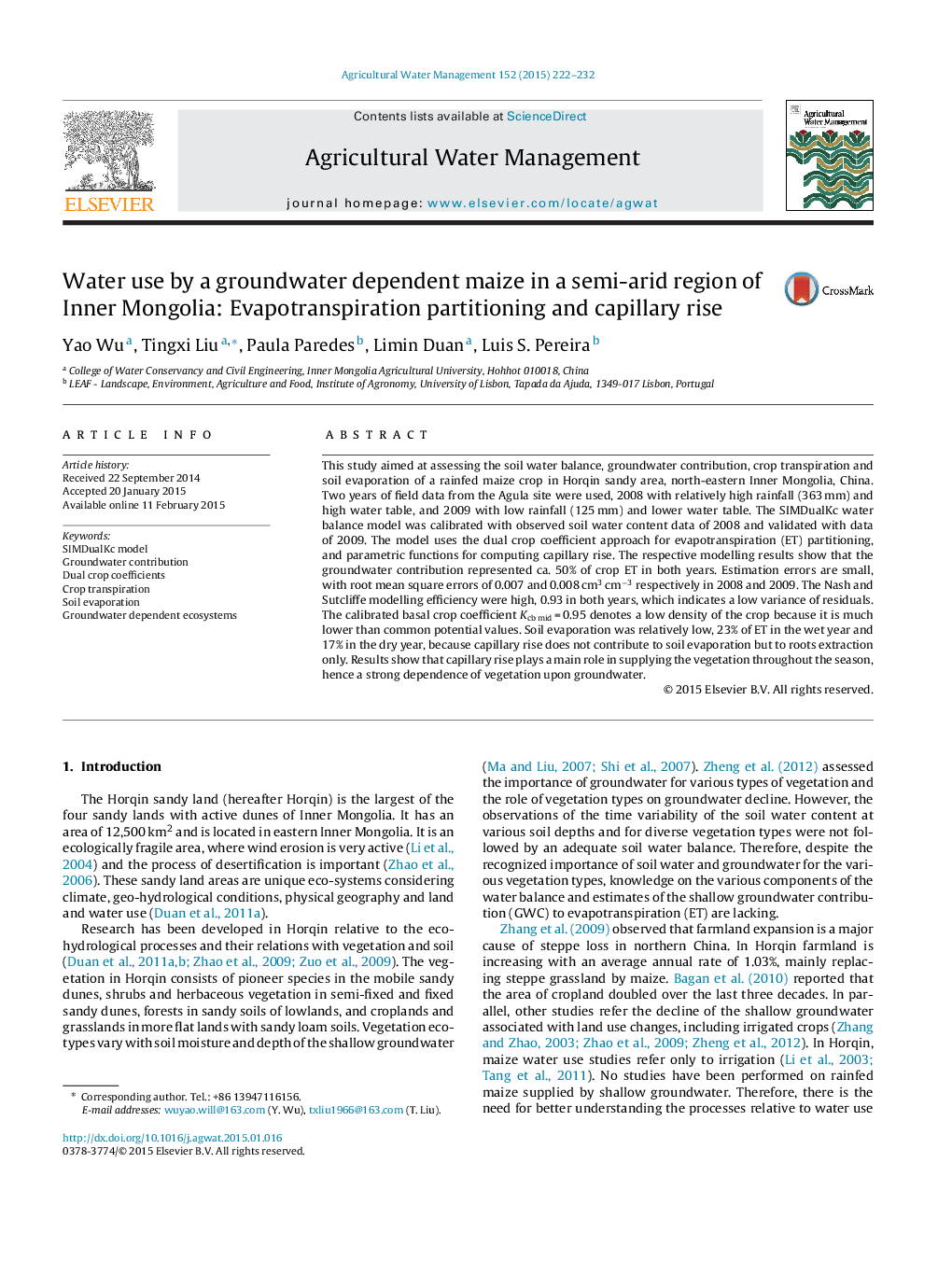| کد مقاله | کد نشریه | سال انتشار | مقاله انگلیسی | نسخه تمام متن |
|---|---|---|---|---|
| 4478534 | 1622927 | 2015 | 11 صفحه PDF | دانلود رایگان |
• Vegetation in Horqin sandy land depends on water availability, mainly from groundwater.
• SIMDualKc model was calibrated with soil water data and allowed ET partitioning.
• Transpiration is mainly from groundwater contribution, that is 50% of ET.
• Soil evaporation is mainly from rainfall and is smaller than in irrigated areas.
• Policies for groundwater conservation are paramount for landscape sustainability.
This study aimed at assessing the soil water balance, groundwater contribution, crop transpiration and soil evaporation of a rainfed maize crop in Horqin sandy area, north-eastern Inner Mongolia, China. Two years of field data from the Agula site were used, 2008 with relatively high rainfall (363 mm) and high water table, and 2009 with low rainfall (125 mm) and lower water table. The SIMDualKc water balance model was calibrated with observed soil water content data of 2008 and validated with data of 2009. The model uses the dual crop coefficient approach for evapotranspiration (ET) partitioning, and parametric functions for computing capillary rise. The respective modelling results show that the groundwater contribution represented ca. 50% of crop ET in both years. Estimation errors are small, with root mean square errors of 0.007 and 0.008 cm3 cm−3 respectively in 2008 and 2009. The Nash and Sutcliffe modelling efficiency were high, 0.93 in both years, which indicates a low variance of residuals. The calibrated basal crop coefficient Kcb mid = 0.95 denotes a low density of the crop because it is much lower than common potential values. Soil evaporation was relatively low, 23% of ET in the wet year and 17% in the dry year, because capillary rise does not contribute to soil evaporation but to roots extraction only. Results show that capillary rise plays a main role in supplying the vegetation throughout the season, hence a strong dependence of vegetation upon groundwater.
Journal: Agricultural Water Management - Volume 152, April 2015, Pages 222–232
